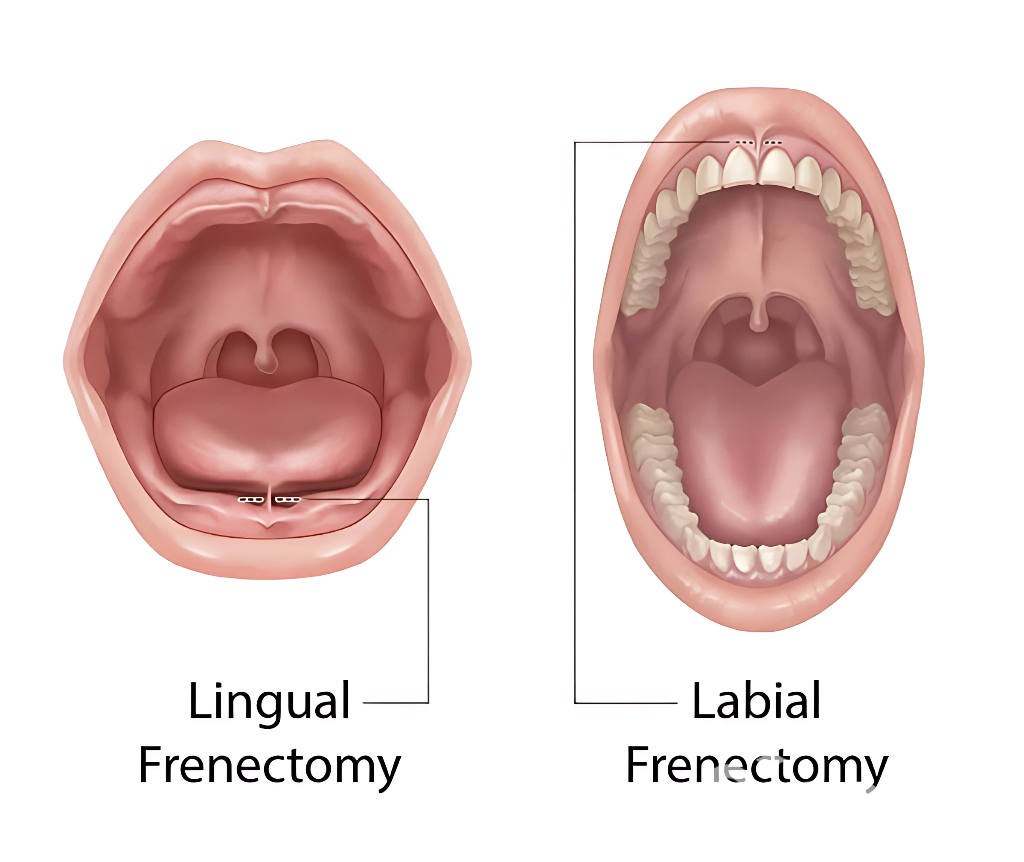Frenectomy Explained: How It Can Boost Speech, Eating, and Oral Health
A frenectomy improves speech, eating, and oral hygiene by releasing tight tissue in the mouth, helping with better movement and preventing dental issues.
How a Frenectomy Can Improve Speech, Eating, and Oral Health
What Is a Frenectomy?
A frenectomy is a minor surgical procedure that involves removing or modifying a frenulum—a small band of connective tissue inside the mouth. This tissue helps anchor parts of the mouth, like the tongue and lips. There are two common types treated in dental care:
- Lingual Frenulum: Connects the underside of the tongue to the floor of the mouth.
- Labial Frenulum: Connects the inside of the upper or lower lip to the gums.
When a frenulum is too tight, short, or thick, it can limit movement and function—leading to conditions like being tongue-tied (ankyloglossia) or lip-tied.
Signs You May Need a Frenectomy
In Children:
- Difficulty breastfeeding or latching
- Speech delays or unclear pronunciation
- Trouble forming sounds like “L,” “R,” or “TH”
- Gaps between front teeth (especially upper teeth)
In Adults:
- Trouble speaking clearly or quickly
- Jaw or neck discomfort from strained speech
- Food trapping between the lips/gums, and teeth
- Difficulty chewing or swallowing
- Gum recession near the frenulum attachment
If you or your child shows these signs, consult a dentist or specialist for an evaluation.
Oral Health Benefits of a Frenectomy
A frenectomy doesn’t just enhance speech and eating—it also promotes better oral hygiene and long-term dental health.
1. Prevents Gum Recession
A tight lip frenulum can pull on gum tissue, gradually leading to gum recession. This exposes tooth roots and makes them more prone to sensitivity and decay. A frenectomy reduces that tension, helping maintain healthy gums.
2. Closes and Prevents Tooth Gaps
An oversized labial frenulum can cause a gap (diastema) between the front teeth. While orthodontic treatments like braces can close the gap, a frenectomy ensures the tissue doesn't cause the gap to return.
3. Improves Brushing and Flossing
Restricted oral movement can make cleaning difficult. After a frenectomy, patients often find it easier to brush and floss, reducing the risk of plaque buildup, cavities, and gum disease.
Final Thoughts
A frenectomy is a quick, effective procedure that can offer significant improvements in speech clarity, eating comfort, and oral hygiene. Whether you're addressing a child’s speech delay or an adult’s ongoing dental issues, this simple treatment can lead to lasting benefits.



